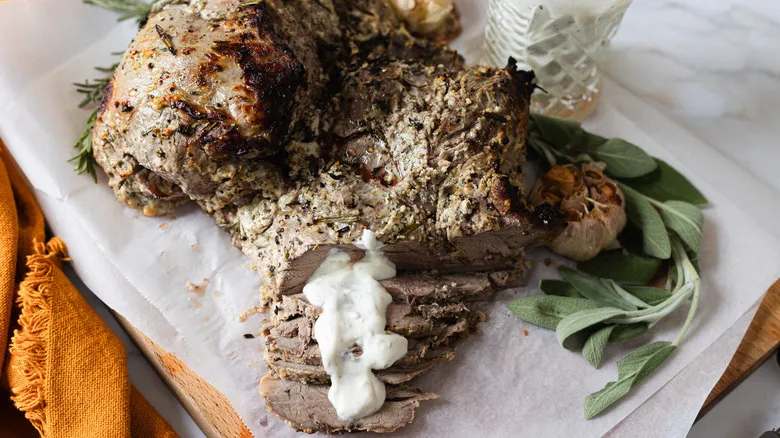Gather the ingredients for roasted leg of lamb
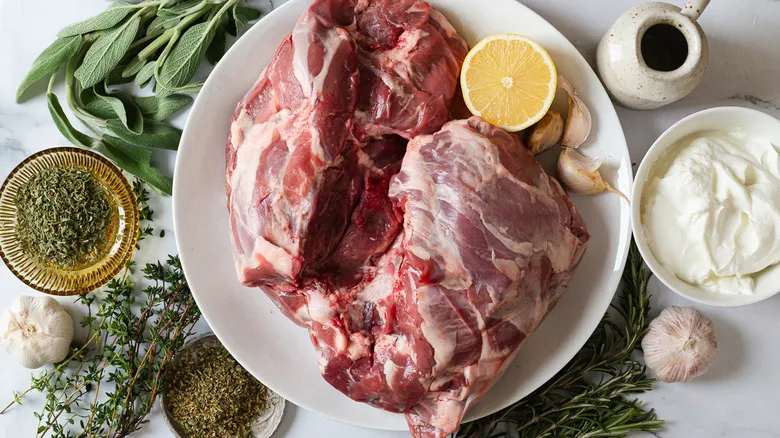
Get ready to prepare your roasted leg of lamb by gathering all the essential ingredients for this delicious dish. Your shopping list should feature plain Greek yogurt, which will form the base of a zesty marinade, along with fresh lemon for both zest and juice to infuse a citrus flavor. You'll also need several heads of garlic, both for minced cloves in the marinade and for roasting with the lamb. Herbes de Provence, dried thyme, and dried sage will add a fragrant herbal touch to the dish. The star of the show, a boneless leg of lamb, will be enhanced by olive oil, kosher salt, and freshly cracked pepper for optimal seasoning. To garnish the dish, we’ll use fresh thyme, sage, and rosemary, which will bring a burst of freshness to the meat as it roasts to perfection.
Step 1: Prepare the marinade
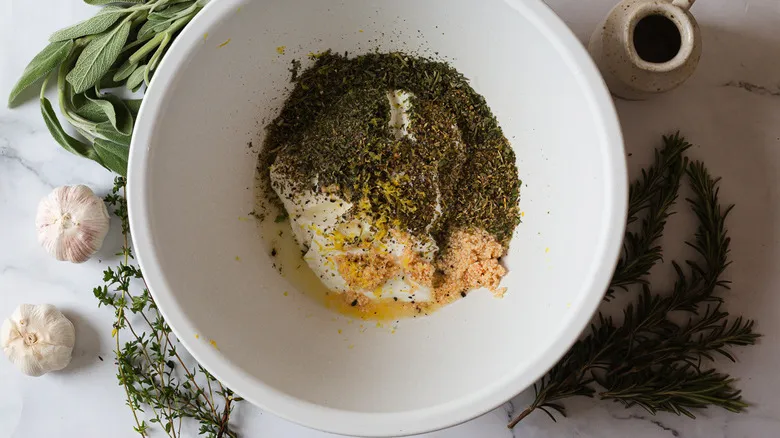
In a mixing bowl, blend together yogurt, the zest and juice of one lemon, minced garlic, dried Herbes de Provence, dried thyme, dried sage, salt, and black pepper. Stir thoroughly to form a smooth marinade.
Step 2: Save a cup
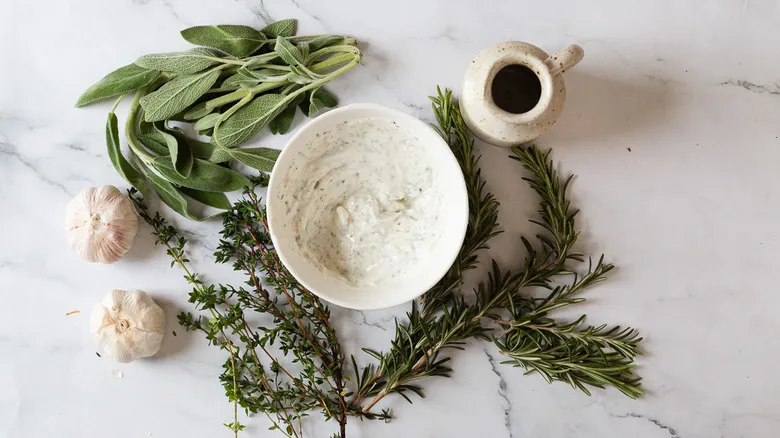
Reserve one cup of the marinade for future use.
Step 3: Marinate lamb
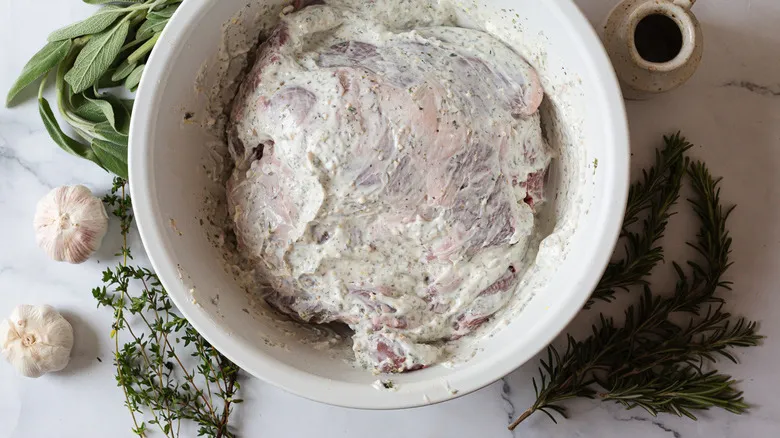
Put the boneless lamb leg in a spacious dish or a resealable plastic bag. Ensure it is completely covered with the leftover marinade.
Step 4: Set aside for an hour
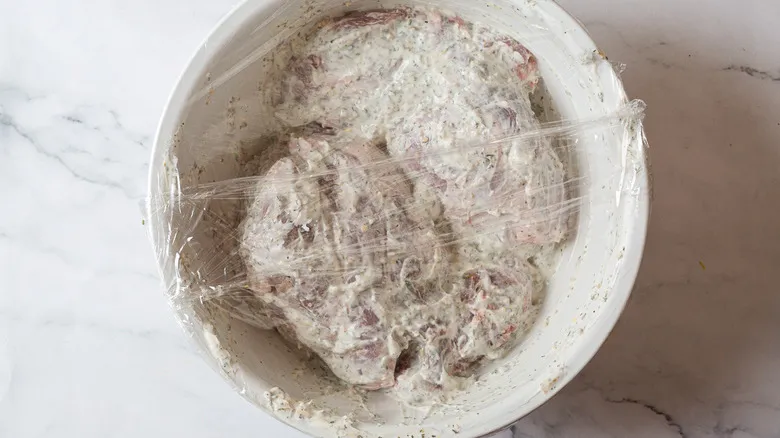
Wrap the dish in plastic wrap or seal the bag, then refrigerate for a minimum of 1 hour, or ideally overnight, to let the flavors infuse into the meat.
Step 5: Preheat oven
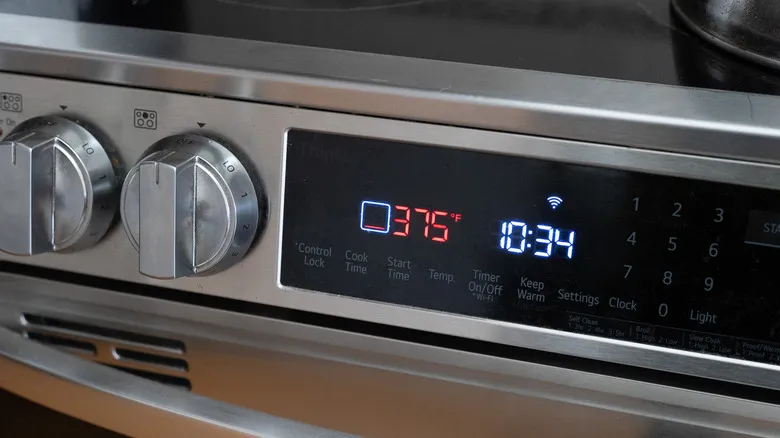
Set your oven to preheat at 375°F.
Step 6: Bring to room temperature
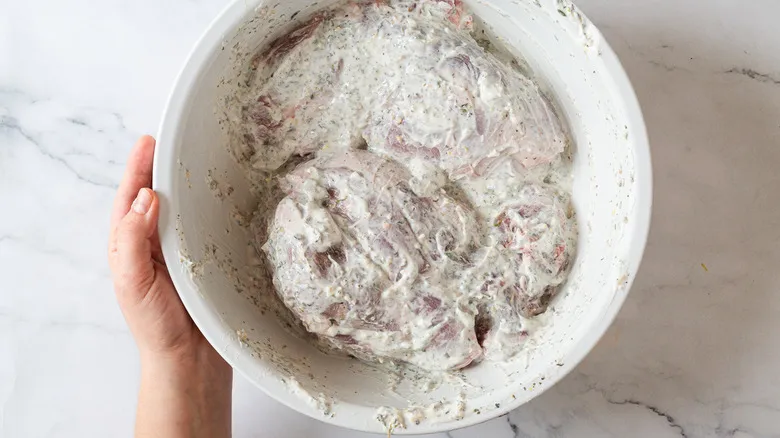
Take the marinated lamb out of the refrigerator and allow it to sit at room temperature for approximately 30 minutes.
Step 7: Transfer to baking dish
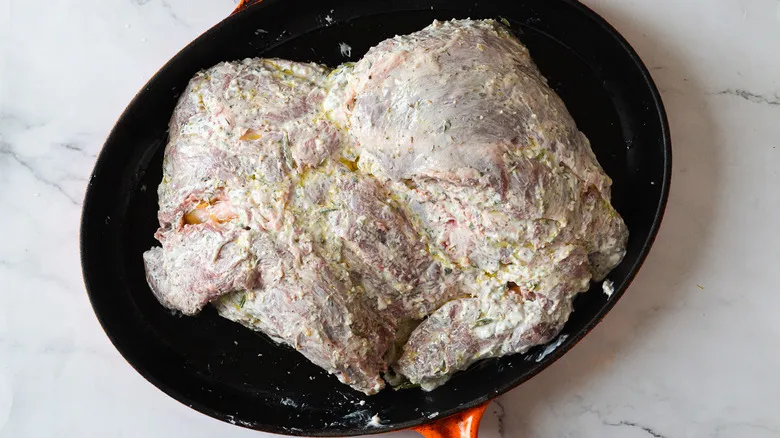
Position the lamb in a generously greased roasting pan or on a baking sheet lined with parchment.
Step 8: Garnish
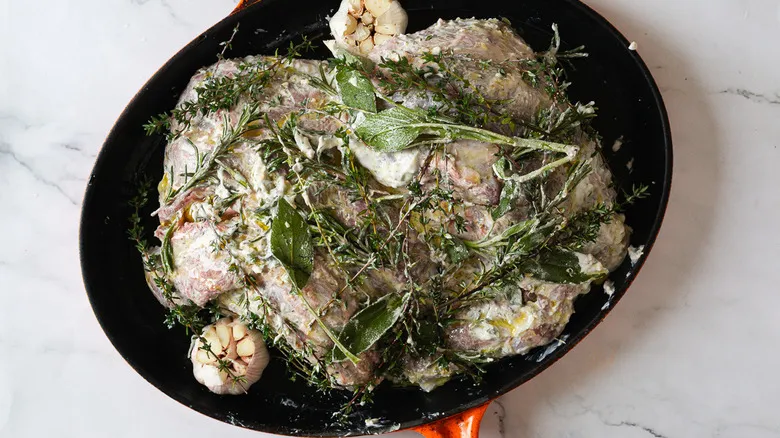
Drizzle the lamb with olive oil, pour the remaining marinade from the bowl over it, and add whole garlic heads along with fresh sage, thyme, and rosemary.
Step 9: Roast the lamb

Cook the lamb in the preheated oven for approximately 50 minutes to 1 hour, or until it reaches your preferred level of doneness (medium-rare is about 145°F).
Step 10: Prepare yogurt herb sauce
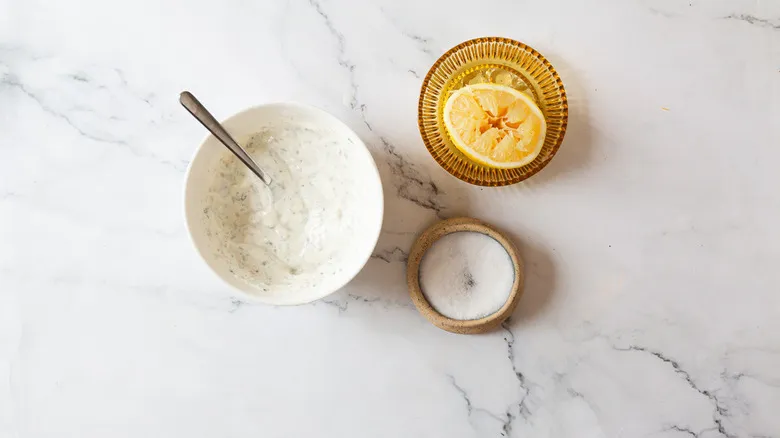
As the lamb roasts, get the yogurt-herb sauce ready. Combine the reserved 1 cup of marinade with 1 teaspoon of lemon juice and 2 teaspoons of olive oil. Sample the mixture and adjust with salt and pepper to your liking.
Step 11: Rest the lamb
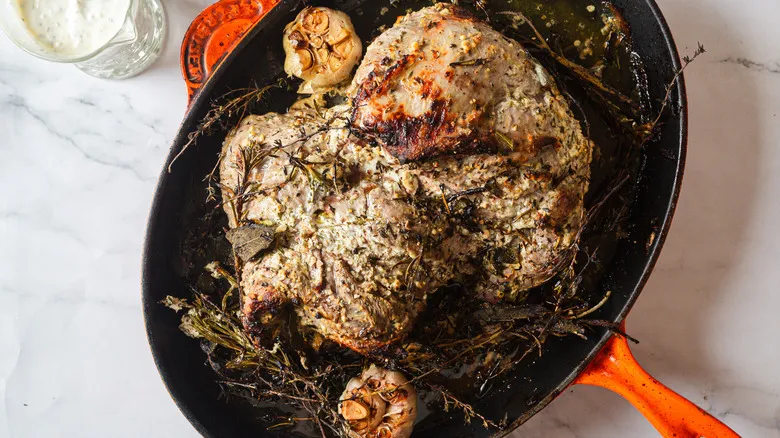
When the lamb attains the preferred temperature, take it out of the oven and allow it to rest for approximately 15 minutes before serving.
Step 12: Serve the perfect boneless roasted leg of lamb
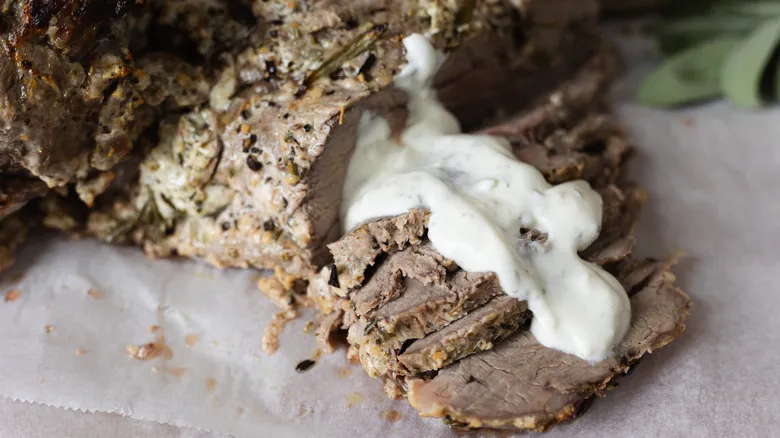
Accompany the lamb with the yogurt-herb sauce served on the side.
How do I know when the lamb is done?
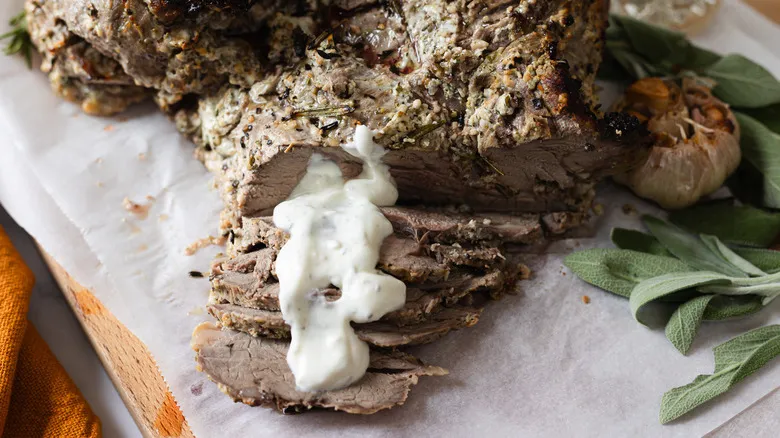
To determine when a roasted leg of lamb has reached the perfect level of doneness, precision is key. The most dependable approach is to use a meat thermometer, inserting it into the thickest part of the roast while steering clear of any fat or gristle. Once the thermometer reads 145°F, you can take the lamb out of the oven. This internal temperature will result in a medium-rare finish that showcases the meat's tender texture and rich flavor, with the interior remaining slightly undercooked and the exterior well done.
For those who prefer a visual assessment, you can make a small incision in the lamb to check the color. Ideally, perfectly cooked lamb will have a lightly pink center with a hint of rosiness. While the outer layers may show a gray-brown hue, the inside should not be completely cooked through. Allowing the roast to rest for 15 minutes after taking it out of the oven will also enable the temperature to rise slightly and the juices to redistribute throughout the meat. Whether you opt for the thermometer method or a visual check, reaching an internal temperature of around 145°F will ensure you enjoy succulent, juicy lamb instead of a dry, tough piece of overcooked meat.
Can I roast the leg of lamb a day in advance?
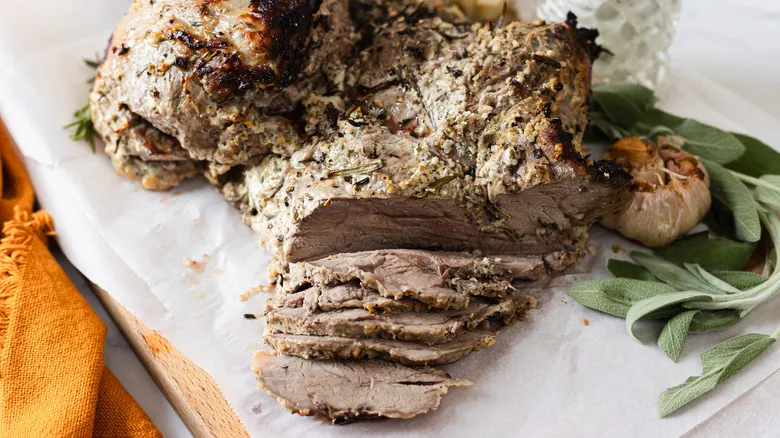
While freshly roasted lamb is undeniably tasty when served right after cooking, preparing the leg ahead of time makes entertaining or meal prep much easier during a hectic schedule. You can roast a boneless leg of lamb up to a day in advance, and some people even prefer this method to allow the flavors to fully develop. After taking the roast out of the oven, let it cool completely at room temperature, then wrap it securely in plastic wrap or foil and refrigerate it overnight.
When it’s time to serve, simply slice the chilled lamb and arrange the pieces on a baking sheet. Reheat it in a 350°F oven until the internal temperature reaches 145°F and the meat is warmed through, which should take about 20 minutes. This process will restore the lamb's full flavor and juiciness, making roasted leg of lamb a practical choice for busy dinners!
What cut of lamb can I use in place of a boneless leg of lamb?
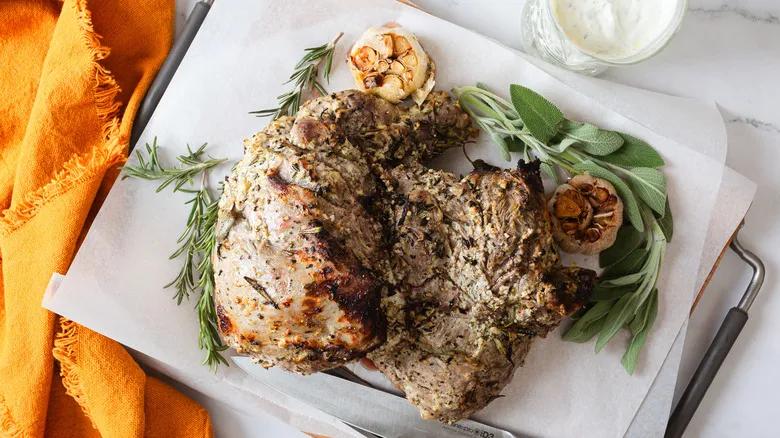
Although the recipe was specifically designed for a boneless leg of lamb, there is some leeway if that cut isn't available. A great alternative would be a boneless butterflied leg of lamb, which ensures even cooking and allows marinades and spices to penetrate effectively, similar to the boneless roast. Another suitable choice is a boneless lamb shoulder roast, which provides a comparable cooking experience without bones. You can also opt for a bone-in leg of lamb, but be prepared to make some adjustments to the cooking instructions.
When using the bone-in cut, you'll need to extend the oven time to 1 to 1.5 hours, depending on the size, since the bone can slow down the cooking process. If the exterior browns too quickly before the interior is fully cooked, it's advisable to loosely cover the lamb with foil. Regardless of the cut, lamb should be cooked until it reaches an internal temperature of 145°F for medium-rare doneness. It may take a bit longer to achieve this with a bone-in piece due to reduced surface area exposure. Remember to rotate the lamb halfway through the roasting process as well.
Recommended
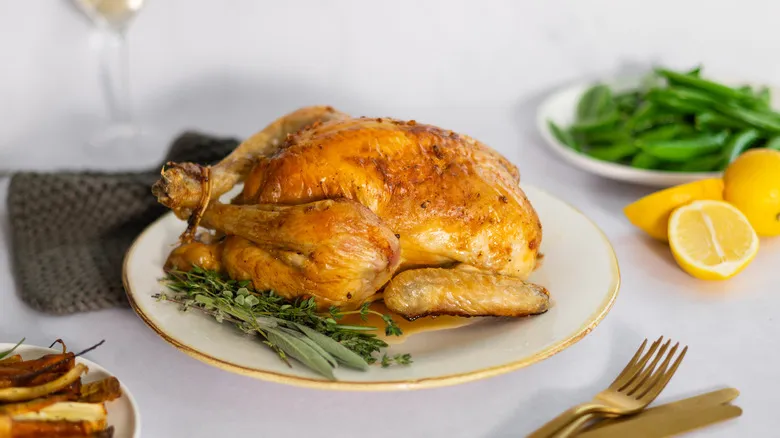
Basic But Foolproof Whole Roasted Chicken Recipe
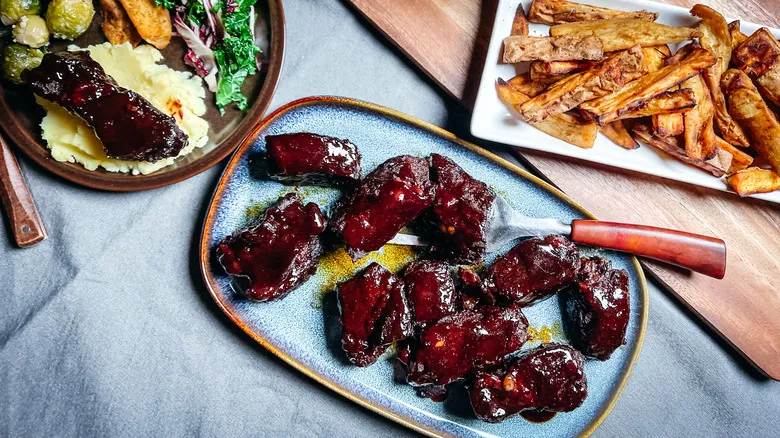
Smoky Sweet Barbecue Beef Short Ribs Recipe

Buttermilk Biscuits And Sausage Cream Gravy Recipe

Basic 3-Bean Vegetarian Chili Recipe
Next up

